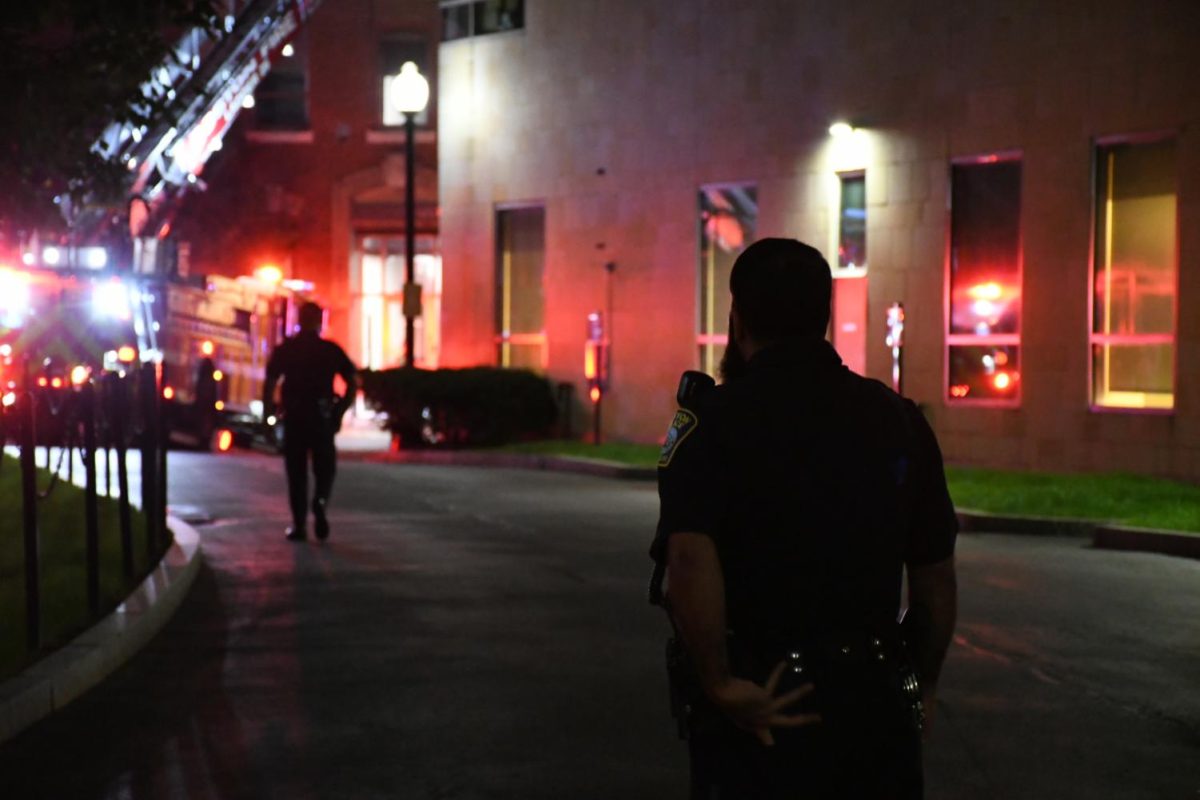By Angel Feliciano, News Staff
At Northeastern, administrators receive thousands of applications from high school seniors around the globe every spring semester. With so many people hoping to be a member of the next Husky class, the task of giving each a fair read may seem impossible.
The number of college applications to the university has set records the past two years. 2013 is no exception – as the university received around 47,322 applications according to Renata Nyul, a university spokeswoman.
“The applicant pool this year is higher than ever,” she said. “Last year, we received around 44,208.”
Jane Brown, vice president of enrollment management at Northeastern said during the months of January to March, admissions counselors read applications all day long – sometimes even at night. About 20 college admission counselors read the applications, which include essays, high school transcripts and recommendations, full time.
“All of our counselors are assigned to various territories and they read the applications from those territories,” Brown said. “And we do have a number of other people that we hire on a part-time basis just to help us read applications. And so very often, those might be people that have worked in the counseling field before. Some of them even having been here before. We invite them in during this period of time and we provide them with very high level of training so that they understand how applications are read. And they help us process those applications.”
With so many applications that need to be read, there are numerous things that counselors keep in mind, Brown said. The incoming freshman class will total around 2,800 students.
“We’re looking to see those students who would be most successful in a Northeastern environment,” Brown said. “Because we have many more qualified students than we can possibly admit. The vast majority of those 47,000 applications are students who could be successful here.”
When counselors look at applications, there are several factors they consider, not just GPA and SAT or ACT scores.
“When we look at applications, we look at a range of academic qualities as well as personal qualities,” Brown said. “In order for us to do that, we need to read all of those applications from cover to cover. That’s what admission counselors are doing now. We’re not just looking to see test scores or just the GPA, but we’re also looking at how much students have challenged themselves in high school.”
Brown said there are a couple of criteria that counselors keep in mind. Those include how students have been taking advantage of the most rigorous programs that their high schools offer and what signs there are to show that a student is intellectually curious.
“Then we’re also looking at those personal traits that we might find in students references, or their choice of extracurricular activities,” Brown said. “Are students adaptable? Are they creative and innovative? Do they express an interest in learning more about the world? Do they have that sort of global perspective? Have they demonstrated leadership?”
Admission counselors also look very closely at how students spend their time outside of class and how students deal with failure and hardship. Brown said these qualitative characteristics “are only things you can find when you’re reading students’ essays, when you’re looking at their outside-of-classroom experiences and when you’re looking at their references.”
After counselors have read over college applications in their regions or territories, they gather the data from the student records or applications, then record the information in a database.
“And then we start out by using some of those characteristics to begin to select the class using a technology,” Brown said.
Brown mentioned that if a student has taken a rigorous course load, a counselor will assign a rating to the student’s academic rigor.
“And so we translate a lot of that qualitative data into a quantitative form,” she said. “So it’s either a rating or some kind of category, so that we can do a little bit of selection using technology.”
After dealing with numbers, Brown said they look at some of the university’s goals, like bringing in students from a variety of backgrounds.
“We’re looking to bring in a diverse student body, a student body that represents the world geography because that creates the most enriching environment for students to learn in,” she said. “We look for diversity of all kinds so we look for racial, ethnic and cultural and political, spiritual — all of those kinds of diversities … so we can bring a community together.”
The counselors believe that these characteristics can help build a strong intellectual community.
“So we start to pull out those applications that will help us create that shape of the class. We start looking at the overall academic profile and where the students are coming from,” Brown said.
Admissions counselors processed 18,000 applications during the early action period. Many of those students who were not offered admission were deferred to the regular pool.
“Then we take all the RD [regular decision] applications and those deferred from EA,” Brown said. “Those get all read between Jan. 15 and when our applications [decisions] go out, which is sometime in late March.”
Brown described the process as “very complex.”
“It’s a process that takes a large committee quite a bit of time too,” she said. “An admissions officer’s life is very typical. They’re out on the road, visiting schools in the late fall and the early winter, [then] their lives change dramatically. They are always glued to their computer.”








